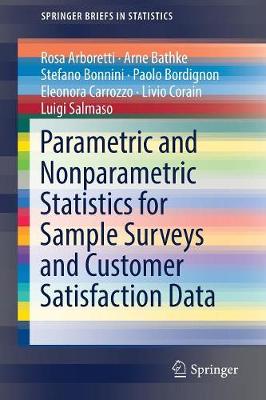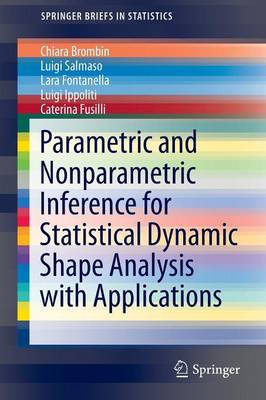SpringerBriefs in Statistics
1 primary work • 3 total works
Book 15
This book deals with problems related to the evaluation of customer satisfaction in very different contexts and ways. Often satisfaction about a product or service is investigated through suitable surveys which try to capture the satisfaction about several partial aspects which characterize the perceived quality of that product or service. This book presents a series of statistical techniques adopted to analyze data from real situations where customer satisfaction surveys were performed.
The aim is to give a simple guide of the variety of analysis that can be performed when analyzing data from sample surveys: starting from latent variable models to heterogeneity in satisfaction and also introducing some testing methods for comparing different customers. The book also discusses the construction of composite indicators including different benchmarks of satisfaction. Finally, some rank-based procedures for analyzing survey data are also shown.
Parametric and Nonparametric Inference for Statistical Dynamic Shape Analysis with Applications
by Chiara Brombin, Luigi Salmaso, Lara Fontanella, Luigi Ippoliti, and Caterina Fusilli
This book considers specific inferential issues arising from the analysis of dynamic shapes with the attempt to solve the problems at hand using probability models and nonparametric tests. The models are simple to understand and interpret and provide a useful tool to describe the global dynamics of the landmark configurations. However, because of the non-Euclidean nature of shape spaces, distributions in shape spaces are not straightforward to obtain.
The book explores the use of the Gaussian distribution in the configuration space, with similarity transformations integrated out. Specifically, it works with the offset-normal shape distribution as a probability model for statistical inference on a sample of a temporal sequence of landmark configurations. This enables inference for Gaussian processes from configurations onto the shape space.
The book is divided in two parts, with the first three chapters covering material on the offset-normal shape distribution, and the remaining chapters covering the theory of NonParametric Combination (NPC) tests. The chapters offer a collection of applications which are bound together by the theme of this book.They refer to the analysis of data from the FG-NET (Face and Gesture Recognition Research Network) database with facial expressions. For these data, it may be desirable to provide a description of the dynamics of the expressions, or testing whether there is a difference between the dynamics of two facial expressions or testing which of the landmarks are more informative in explaining the pattern of an expression.


